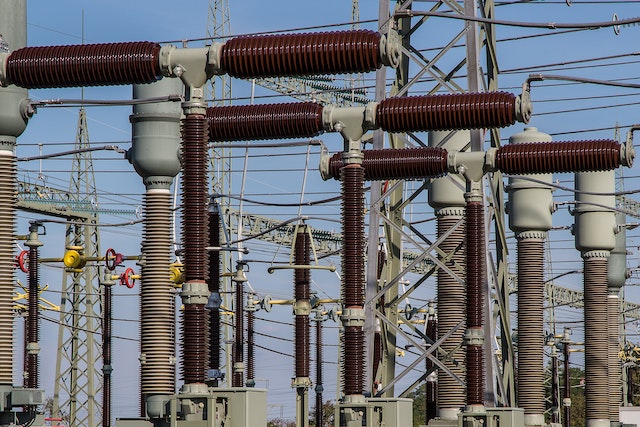Utilities Sector
GRID OPERATOR

In the modern era, the energy industry has been rapidly evolving, with the introduction of new technologies and the integration of IoT in the management of power distribution systems. One of the most important aspects of energy management is the proper monitoring and management of the grid.
The introduction of IoT in the energy sector has revolutionized the way grid management is done. It has provided the ability to collect real-time data, analyze it, and make informed decisions to ensure the grid is running efficiently. In this article, we will discuss how IoT sensor data can help a fictive electric distribution firm to manage their grid.
The introduction of IoT in the energy sector has revolutionized the way grid management is done. It has provided the ability to collect real-time data, analyze it, and make informed decisions to ensure the grid is running efficiently. In this article, we will discuss how IoT sensor data can help a fictive electric distribution firm to manage their grid.
The electric distribution firm in question is a mid-sized utility company that provides power to a small region in Europe. The company has a distribution grid consisting of several substations, feeders, and transformers, which distribute electricity to residential and commercial customers. The company is facing various challenges in managing the grid, including outage management, equipment failure, and load balancing. These challenges require real-time data to ensure efficient management of the grid.
0
Less downtime
By introduction of predictive maintenance
0
Cost savings
0
Messages Per Minute
Messages from field sensors.
The solution to these challenges is to introduce IoT sensors in the grid. The IoT sensors will be installed at various points in the grid to collect real-time data on voltage, current, power, and other parameters. This data will be transmitted to a central data center for analysis and processing.
The first step in the process is the installation of sensors at key points in the grid. These sensors will collect data in real-time and transmit it to a central data center. The data collected will include voltage, current, power, and other parameters. The data center will then process and analyze this data to identify trends and patterns.
The first step in the process is the installation of sensors at key points in the grid. These sensors will collect data in real-time and transmit it to a central data center. The data collected will include voltage, current, power, and other parameters. The data center will then process and analyze this data to identify trends and patterns.
The second step is to develop a data analytics platform that can analyze the collected data. The platform will use machine learning algorithms to identify trends and patterns in the data, which can be used to predict future events. This data will be used to make informed decisions on grid management, including load balancing, equipment maintenance, and outage management.
The third step is to integrate the data analytics platform with the existing grid management system. This will enable the grid management system to make informed decisions based on the data collected by the IoT sensors. For example, if the data analytics platform predicts an equipment failure, the grid management system can proactively schedule maintenance, reducing downtime and improving grid reliability
The third step is to integrate the data analytics platform with the existing grid management system. This will enable the grid management system to make informed decisions based on the data collected by the IoT sensors. For example, if the data analytics platform predicts an equipment failure, the grid management system can proactively schedule maintenance, reducing downtime and improving grid reliability
The fourth step is to develop a dashboard that provides a real-time view of the grid. The
dashboard will provide the grid operators with a visual representation of the grid, including the status of the various components. The dashboard will also provide alerts in case of anomalies or critical events, enabling grid operators to take corrective action promptly.
The fifth step is to develop a mobile application that provides real-time information to the customers. The application will provide information on outages, load shedding, and other events that may affect their power supply. This will enable customers to take informed decisions on power usage, reducing their energy bills and improving grid efficiency
dashboard will provide the grid operators with a visual representation of the grid, including the status of the various components. The dashboard will also provide alerts in case of anomalies or critical events, enabling grid operators to take corrective action promptly.
The fifth step is to develop a mobile application that provides real-time information to the customers. The application will provide information on outages, load shedding, and other events that may affect their power supply. This will enable customers to take informed decisions on power usage, reducing their energy bills and improving grid efficiency
In conclusion, the introduction of IoT sensors in the electric distribution grid can revolutionize the way grid management is done. The use of real-time data analytics can help grid operators make informed decisions, reducing downtime, and improving grid reliability.
The use of a mobile application can also provide real-time information to customers, enabling them to make informed decisions on power usage. The benefits of IoT in the energy sector are enormous, and it is expected that more companies will adopt this technology to improve their operations.
The use of a mobile application can also provide real-time information to customers, enabling them to make informed decisions on power usage. The benefits of IoT in the energy sector are enormous, and it is expected that more companies will adopt this technology to improve their operations.
Ready to work with us?
Start working with us today and get a wonderfull experience
